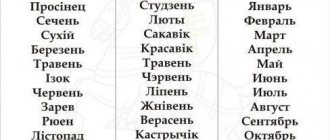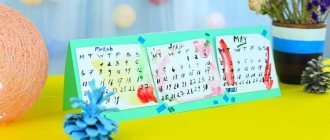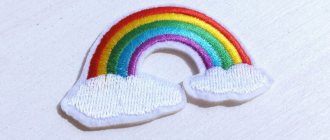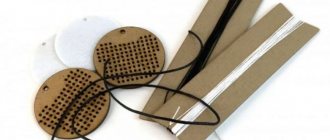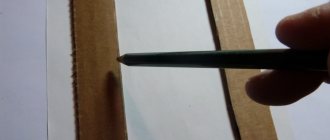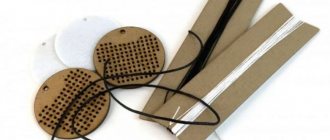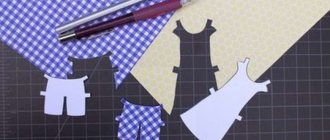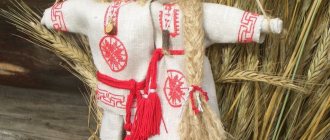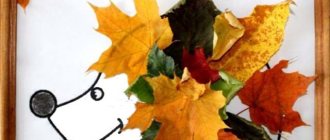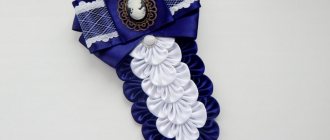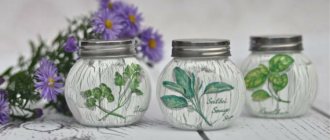A beautiful and convenient desk calendar is an assistant in everyday matters and a source of inspiration. A hand-crafted calendar of events is an original creative project. How to make a desk calendar with your own hands?
Let's consider several options that will be of interest to lovers of self-organization. This is a fun activity that is accessible to everyone. You can involve children and the whole family in the work. A practical, bright calendar is an excellent decoration for your home, nursery, kitchen, living room.
Materials
To make a calendar you will not need a lot of things. The easiest way to make it is from paper or simple cardboard, but you can use fabric, buttons, stickers and anything else that you have enough imagination for.
Scissors, a simple pencil and ruler, and glue will also come in handy.
Calendar from the Internet
The simplest manufacturing option is to use the Internet and a printer.
To do this, you need to find a calendar for the next year, choose a nice frame for it and print it out.
To make the craft unique and remind your family of family holidays, you can print out or write by hand all the expected events on an empty space.
The following will make the craft unique:
- Own drawings;
- Applications;
- Photos of family or memorable events.
In a similar way, you can print out a calendar by month and glue or pin all 12 leaves onto fairly thick cardboard.
In this case, each new sheet can be decorated according to the time of year or you can create a themed calendar by printing out interesting facts.
When the month ends, the sheet is simply removed.
Paper calendar
Let's make a calendar out of paper! If it is not possible to print out the finished number, you can redraw it on regular sheets of paper or use a school notebook.
To do this you need:
- Write the name of the month at the top of the sheet.
- Draw a grid of six rows and seven columns.
- Write the names of the days of the week on the top line.
- Take a ready-made calendar and arrange the days in the appropriate cells.
- Starting in December, glue the sheets onto cardboard and fasten them with paper clips or decorative cord.
When using a notebook, such difficulties will not be required. The leaves will simply turn over as needed.
Method 3: Calendar in Publisher
Publisher is an app that helps you quickly and easily create professional-looking print products. It is available in certain editions of Microsoft Office, and the company also offers it as a separate purchase.
Publisher combines the capabilities of a text and graphics editor in one tool. Use it to design newsletters, brochures, letterheads and business cards. To create a calendar:
- purchase the Office package or Publisher utility and install it on your computer;
- Open Microsoft Publisher and click on "Calendars" in the main window or in the list on the left. Choose the workpiece you like;
- you can leave the default design or adjust it as you wish by clicking the down arrow to the right of the "Design" function;
- click the “Set dates” button and select a time period;
- save the result in PDF format or print it on your home printer.
Software subscription as part of the Office suite is $6.99 per month
You can also draw a calendar in other Microsoft programs - Excel and Word. But this will take a lot of time and require certain skills in working with software. Also, these applications do not allow you to visualize the material colorfully.
You will have to manually create a table or search online
Desk calendar
A desk desk calendar will be made from small sheets of paper and cardboard.
- To do this, you first need to make a “house” out of cardboard in the form of a stable triangle.
- Place ready-made calendar sheets on it and fasten the structure with alligator clips, paper clips, and braid.
- As needed, the leaves are turned over to reveal the next month.
- The base of the calendar can be made a little more sheets and decorated in an unusual way using ribbons, bows, and photographs.
You can do it even simpler:
- Make a small box out of cardboard, into which you put cardboard with the name of the month (highest), day of the week (medium), date (low).
- If necessary, you can put stickers on each cardboard with tasks or reminders for a specific day.
Such planning can be done a month in advance so as not to forget about any important event.
Assembling the calendar
I cut 20 cm of soutache ribbon in half. I thread each piece from under the triangular base, pull it through the leaves with months and bring it back again, inside the base of the calendar, where I tie a knot. It is important not to tighten the ribbons too much, leaving enough space for the pages to turn easily. I cut off the ends of the ribbon. The calendar is ready! If you need to draw something on it, you can fold it in half at any time, and then straighten it into a triangle again. It is very comfortable!
If you want to add a block for writing to your calendar, make it more colorful, or just practice scrapbooking one more time, then you can be inspired by this wonderful video master class from Lena Pol on creating a desk calendar with a fluffy fox.
I wish you a creative mood, great inspiration and the most interesting and beautiful calendars! Using cardboard, the site also has excellent master classes on creating a magic box postcard in the shape of a box with a surprise, a chocolate postcard, and a paper cake with wishes!
Buttons
You can make a funny DIY children's calendar from ordinary buttons.
- To do this, fairly large clothing accessories are sewn onto the fabric, and cardboard circles with painted numbers are placed inside the buttons.
- This way you can create a calendar for the whole year or change the cardboard numbers every month according to the days of the week.
For convenience, the names of the month and days of the week are sewn above the rows of buttons.
Tags
With your own hands with your own hands. for handicrafts and with your own hands a manual for making with your own hands with your own hands. with your own hands these from your own hands with your own hands you can How to make a calendar, how to make a practical one, How to make a tabletop one, To make it convenient, how to make an eternal one, how to make advent layers of paper are placed Paper from paper with your own, what kind of paper Do it yourself, a calendar with your own hands, This is a kind of visual, created with your own hands. create your own version, details of your dreams, adults with your own hands, a bird with your own hands, papers with your own hands, a calendar with your own hands
New Year's makinginstructions for advent children's craftssimple materialshandicraftsstep-by-stepleafletarticledaybasicgiftsoneallneworiginalappliquereadytowritefollowingdatatoyscardstasksuse
Velcro for clothes
Instead of buttons, you can use pieces of Velcro. To do this, simply draw numbers on them and attach them to a calendar grid created from the second half of Velcro.
This option makes it possible to remake the calendar much faster and easier.
Cardboard calendar
Instead of fabric, you can use a thick sheet of cardboard or a wooden board.
- To begin with, draw a calendar grid on it, prepare the dates of the month and set them on the grid using regular or curly push pins.
- At the end of the month, all components are removed and placed in a new order.
- Funny stickers with an adhesive base will make the calendar an even more unusual and vibrant creation.
An original calendar can be cardboard houses with a numerical grid printed on its walls.
You can create 4 buildings at once for each season. Three sides will represent a calendar, and the fourth will be designed to accommodate residents. These can be funny snowflakes, green and yellow leaves, flowers.
Perpetual calendar
The question “How to make a perpetual calendar with your own hands?” has several solutions.
In addition to Velcro and buttons, you can sew special pockets into which you can put cardboard with the name of the month, day of the week, and date.
- Such calendars can be supplemented with windows that will contain information about planned weather conditions and temperature.
- To do this, you will have to make additional cards with sun, rain, snowflakes, clouds and additional temperature numbers.
- To avoid making too many cards, it is enough to prepare sets of numbers from 1 to 3 and from 0 to 9.
- This is quite enough to set the temperature indicators. The minus and plus signs are also useful.
- Cards are made from cardboard or felt. In the second case, the elements can be attached using Velcro.
For kids, such a calendar can be made in the form of a train, a car or a ship, over which the sun will shine or the rain will frown (depending on the conditions outside the window).
Birthday calendar: beautiful and convenient!
There are different ways to provide timely reminders about upcoming events. Special programs, “reminders” in Outlook and other services. And there are also visual ways for visual people. Like the calendars we’ll talk about today. And, it seems to me, such devices can serve not only as reminders of the holidays, but also become a nice decoration for the interior of the room.
What is it?
The calendar immediately shows how many birthdays there are in a certain month and who specifically has them. See what calendar options exist.
As you can see, they are all different in design, but essentially the same. Although no, there is also this option, which is also very interesting.
The main thing is that the date of your next birthday is at your fingertips. Then the holiday won’t take you by surprise and you won’t have to apologize for missing a congratulation.
In my opinion, such a calendar can be hung in the hallway. Then every morning, leaving the house and taking a quick glance at it, you will be able to assess the situation: is it time to prepare for the next date or is there still enough time ahead?
New Year calendar
A DIY New Year's calendar will be a great opportunity to bring the holiday closer and make the wait more enjoyable.
Unlike ordinary calendars, the advent calendar for 2022 can be called a mirror copy of the usual calendar. It shows how many days are left until the expected event occurs.
Most often it is made for the Night of the Changing of the Year. But you can create a similar creation for any other holiday.
- An unusual calendar can be created using any of the above methods or you can use your own, unusual ideas.
- Most often it is made in the form of a poster with pockets in which fun tasks, small gifts or sweets are placed.
- You can decorate the Advent calendar with paper garlands, figures of Snow Maidens and Snowmen, and snowflakes.
Simple or unusual calendars, created with your own hands, will help decorate any room in an apartment or house and become a good gift for the New Year.
Methodological development Folk calendar
Folk rag dolls
Traditional rag doll
carries the memory of culture and does this
much brighter, wider and deeper than
any other toy.
G. L. Dine
The entire life and way of life of our ancestors was built on the cycles of nature, merging into one with the calendar and climatic conditions of agricultural life. The Russian doll is considered one of the most mysterious symbols of Russia. This is not just a children's toy, it is an integral attribute of ancient rituals. Since time immemorial, craftsmen have mastered the art of making such dolls, which have absorbed all the cultural traditions and customs of Rus'. The dolls were very different, not only made of fabric - from birch bark, from straw, from ash. It was believed that dolls made by hand from scrap materials had magical properties. Our ancestors believed that dolls were able to ward off evil spirits and bring happiness to the house.
"Of all the mysteries in the world
the secret of the doll is the most mysterious"
M. E. Saltykov-Shchedrin
It is a pity that the folk doll has been completely pushed out of our lives by modern, sometimes harmful, toys.
A rag doll is a toy with valuable educational qualities that are recognized and cultivated in ethnopedagogy and in practical work with children. This is a great piece for crafts, arts and crafts, arts and crafts and textile design.
The priority direction in our group is “Moral and Patriotic Education of Preschool Children.” When equipping the mini-museum “Springs”, much attention was paid to folk craft exhibits, namely the “Traditional rag doll”. In order to introduce children to the types of dolls, I made dolls following all the traditional craftsmanship techniques that I had to learn from books.
The main goal of museum pedagogy is to introduce the younger generation to museums and creative personal development. Therefore, today museum pedagogy is considered as an innovative pedagogical technology. This is relevant at the present time, as it broadens the horizons of children, makes it possible to enrich the knowledge of preschoolers about the world around them, and enriches the subject-development environment of a preschool institution with new forms of work with children and their parents. I created a workshop for making dolls, where the guys and I make rag dolls for the mini-museum and for the rag doll corner in the group. And what is very important, both girls and boys “twist” the dolls with equal interest. Teachers and parents also enjoy attending my master classes.
I would like to present to your attention my dolls.
According to their purpose, dolls are divided into three groups: gaming, amulet and ritual.
But often the same doll belongs to two types at once, for example, the “Bunny on the Finger” doll is a talisman doll and at the same time a play doll, or “Kuvatka” is a ritual and protective doll.
Play dolls
They were made to teach a child about life while playing. Such dolls served as entertainment for the child. (early childhood dolls, primary school dolls)
• girl-woman (shifter0
• columns,
• doll of happiness,
• bunny on your finger, etc.
Amulet dolls
Called to protect the inhabitants of the house (pets) from hunger, from disease, from bad people.
(amulets of home, prosperity, amulets of health, childhood)
• diaper,
• day-night (home amulet,
• kuvatka,
• grain (grass)
• fever - tremors, etc.
Ritual dolls
Every nation has its own rituals. Our ancestors used dolls for seasonal holidays, weddings, and the birth of a child. For example, Maslenitsa was burned, asking for the departure of winter and the approach of spring, “Go away snowy winter, come red summer.” It was believed that all sorrows, illnesses and troubles went into the sky with smoke.
(rites of the calendar cycle, life cycle, invocation of spring)
• ash,
• stonefly,
• birch bark,
• loosestrife,
• couple (lovebirds), etc.
The longer a woman plays with dolls, the happier and younger she will be - this was a belief that existed in Russia.
Folk doll calendar
The idea to create a doll calendar was born unexpectedly, and was realized when I sewed my first Motanok dolls as a holiday gift
"Mothers Day".
Since ancient times, the doll has been a faithful companion not only for children, but also for adults. She was considered a member of the family, and she was treated specially. The life of a Slav depended on the calendar year, which is why ritual calendar dolls are so diverse.
For the base of the calendar I used a circle made of cardboard. I divided it into 4 parts - seasons.
Since the cyclical nature of the calendar resembles human life, where spring is youth (green), summer is blossoming (red, autumn is the time of harvesting fruits (orange), winter is the time of wisdom and peace (blue).
| On my calendar 12 dolls are presented - play, ritual and protective dolls. The calendar includes dolls that were created during certain months of the year, important dates or holidays. |
JANUARY - the “Christmas Goat” doll was a symbol of vitality and it was supposed to bring this strength to the owner of the hut and his land, his field, so that bread would be born better
.
One of the ritual dolls is the Christmas doll Goat.
The goat symbolizes health, abundant harvest, wealth, vitality.
The Goat doll is made at Christmastime, when we celebrate the transition to the new year, and it helps to lay down images of a new life in which our wishes come true.
It was believed that if the “Goat” came to you at Christmas time, the year would be cheerful and joyful.
The goat is made every year. It is believed that this is a cheerful doll - a talisman that helps maintain feminine strength and energy. So that a woman remains perky, cheerful, cheerful all year long. It helps get rid of the blues and depression, brings fulfillment of desires and success in all endeavors. With her bells, she seems to give fun and cheerfulness and drive away melancholy and sadness.
Before the New Year, the Goat must be burned or thrown into the river.
This doll is made on a crosspiece, and the face, horns, and beard are made of bast or straw.
They dress her in a bright dress. One of the attributes is a bundle of red fabric filled with grain, coins, cereals, salt, etc. Bells and bells can be attached to the goat, beads can be attached to the neck (you can use ready-made ones, or you can make your own; the horns and beard can be decorated with ribbons.
FEBRUARY-doll “Maslenitsa”. It was made on the day when the spring equinox was celebrated, paying homage to the sun, which gives life to everything on earth.
According to legend, Maslenitsa lived in the North, was the daughter of Santa Claus and Snowstorm. One day, a man saw a fragile girl hiding behind huge snowdrifts and asked to help people who were tired of a long winter, warm and cheer them up.
Maslenitsa agreed and, turning into a healthy, rosy-cheeked woman, with pancakes, laughter and dancing, made the human race forget about winter bad weather.
The Maslenitsa doll is an obligatory attribute of a cheerful folk festival - farewell to winter.
In the old days, the presence of a homemade Maslenitsa doll in the house was mandatory. The doll was made for a year, and then at the holiday it was burned or floated on water.
Maslenitsa symbolizes prosperity in the family and is a powerful talisman for the home. The doll is placed in front of the entrance to the house or in the red corner of the hut. Many people still believe in its miraculous power.
Traditionally, the Maslenitsa ritual doll was made from straw or bast, but they always used wood, personifying the violent power of nature.
Ribbons were hung on the doll's hands, and when tied, they made a wish.
Spring is an important and fateful time for our ancestors. According to the idea of our Slavic ancestors, in order for Spring to come sooner, it had to be invited, “called upon.” Girls and young married women were shouting. During calls, we tried to climb higher so that the voice would carry farther. Spring can’t come as an uninvited guest! Get offended, turn away, won’t bring warmth and sunshine. And she is a dear, long-awaited guest. So they greeted and invited Spring in every possible way. spring rag dolls: Stoneflies, Primrose, Martinichki, Joy Bird. All these dolls have one thing in common - their goal is to “attract” Spring.
In the Christian era, spring rag dolls were made “for joy” to please household members tired of the long winter. And yet - all these folk dolls are “one day” dolls. That is, they were made specifically for this day (or several days, and then destroyed. Therefore, all dolls have another function - cleansing. After all, a doll “carried away” diseases and misfortunes , misfortunes and even sins.Often the dolls were not destroyed, but simply hung on tree branches and left there.
The days on which the creation of Vesnyanka dolls was timed varied greatly in different regions. The only month that remained unchanged was March. But, most often, the day of the folk rag dolls Vesnyanka became March 1 (14) - the holiday of Avdotya-Vesnovka was considered
It was a big holiday among , they celebrated it cheerfully and solemnly .
The Vesnyanka doll is a cheerful , perky doll , the doll is as tall as the palm of your hand, and she has strength and joy in reserve until Kupala itself. Traditionally, she is very bright, with hair of an unusual color (yellow, red, green, blue, because she depicted not a person, but the Spirit of awakening nature.
doll is a talisman of youth and beauty. Every woman dreams of preserving her youth and beauty, being loved, radiating joy and happiness! Giving such a doll to a woman means wishing her to always be charming and desirable. And what woman refuses to be charming and desirable? So I made such a Vesnyanka doll for my beloved.
MARCH - doll “Bird of Joy”, a doll of a spring ritual associated with the arrival of spring.
It was believed that birds brought spring on their wings.
The ceremony was performed by married women. They went out into the field and called out to Spring. If during the ritual a bird landed on a woman, it was believed that she would have a good year all year. APRIL - the Vesnyanka doll had the power of youth and beauty.
MAY-doll “Cuckoo” was considered a cure for melancholy and loneliness. In May, on the Ascension holiday (which does not have its own fixed date and falls on the fortieth day after Easter, in a number of places rituals and signs associated with the cuckoo were timed to coincide with this holiday . The baptism and funeral of the cuckoo is a maiden and women's rite of the spring-summer cycle , which is variant of the Trinity cumulation. This is the initiation of 12-year-old girls into girls and their entry into the world of adult life. It consisted of the following: the girls went into the forest and made sure that no one followed them. There they danced in circles, sang songs and cumulated. In a sign that two girlfriends became godfathers for 1 year, they exchanged wreaths and dolls ... By making this doll , the girl put a piece of her soul into it. After kissing three times, the girls exchanged dolls and were considered godfathers .
However, after a certain time and if desired, it was possible to make amends by removing oneself from the obligation of a friendly attitude towards each other, but this happened extremely rarely.
After exchanging dolls, doll specially made for this occasion in rags and shreds . It was made from dried grass “cuckoo tears”. Then the girls buried her, not necessarily buried her, but in the sense of hiding her, getting rid of her. Thus, they got rid of those qualities that are inherent in the cuckoo. She throws eggs into the nests of other birds, and does not care about the further fate of her offspring. After the ceremony, the girl is considered a girl. Thus, this ritual demonstrates the rejection of “cuckooing” and the proclamation of motherhood. The girls say goodbye to their childhood, taking upon themselves the responsibility of “not being a cuckoo.”
This is the cute “Cuckoo” I made from jute twine. doll also considered a cure for melancholy and loneliness. They “talked” their problems at her and then burned her.
JUNE-doll “Happiness” is an assistant on the way to achieving your goal.
JULY - “Kupavka” doll
This is an ancient folk doll for the holidays of Agrafena the Bathing Lady and Ivan Kupala.
Before the Christianization of Rus', the holiday of Ivan Kupala marked the summer solstice, which falls on June 20-22. After the adoption of Christianity and during the transition to a new style, the date of the holiday became July 7th.
In Tsarist Russia it was a favorite national holiday associated with agriculture and fertility.
On Agrafena Bathing Suit (July 6), people washed and steamed in the bathhouse, and prepared brooms for the whole year. On the morning of July 6, people joyfully sang:
| Kupalenka has arrived On seventy carts. Brought to us by Kupalenka Goodness and health, Wealth and honors. |
In some places in Russia on this day, girls put on their best clothes, went to neighbors’ houses and asked: . ”
Translated, this meant: give me some of the girl’s jewelry: earrings, ribbons, beads.
In honor of Agrafena Kupavka, girls and women made a Kupavka doll. It is based on two birch branches tied crosswise. They dressed the doll in beautiful clothes.
Colored ribbons or strings were hung on Kupavka’s hands—cherished girlish wishes—then the doll was allowed to float down the river. The lighter the doll, the better it will float. The more multi-colored ribbons on her hands, the more wishes can come true. People believed that the ribbons tied on the doll's hands also took away all misfortunes and hardships.
This is the importance our ancestors attached to the cleansing power of water. By the way the doll floated, they predicted what the year would be like. Will a whirlpool spin her, wash her to the shore, will she float freely - such life situations are to be expected throughout the year.
AUGUST - “Reaper” doll.
In August it was time for the harvest.
Harvest is the process of harvesting cereal crops, one of the most critical periods in the economic cycle of peasants who regard bread as the highest value; in the ritual complex that accompanied the harvest. At the beginning of the harvest, the ritual of the first (“harvest”) sheaf was performed, the harvest of which was given to the eldest woman in the family.
Before the harvest began, they made a ritual “Reaper” doll . The reaper was also called the “ doll of the first sheaf . ” The doll was placed on the strip and they began to reap from it. The Reaper symbolizes, first of all, female fertility, abundance, the ability to conceive, bear and give birth. In addition, the Reaper symbolizes female labor power and tirelessness: this doll helped real reapers in the field during the harvest season , when there was too much work. The grain had to be harvested quickly, so everyone, young and old, went out into the field. There is a bag of bread and salt on the doll's the doll's . Work from dawn to dusk was often accompanied by feeding babies right in the field. The doll reflects the festive side of the harvest , so I made it in beautiful, bright clothes. The hot harvest time was important for the family and required high dedication, for which women prepared by creating dolls and preparing for hard work . This doll combines motherhood, fertility, labor, labor force and tirelessness, everything that was the main components of a woman’s life.
This magical doll seems to collect all the energy and power of ears filled with juice, the hot sun of the passing summer, ripe August smells and sounds.
All year long it will remind me of how much power nature has built into every life, how many conditions it creates for this life to be realized as fully as possible. She will help me concentrate my intentions and strength for new achievements.
SEPTEMBER - the wedding doll “Lovebirds” was a symbol of a strong family union and ardent love. I’ll tell you about the Lovebirds doll , which in the old days was made for a wedding . This doll was suspended under the arc of the cart harness carrying the young couple to the groom's house after the wedding in the church. This ancient tradition is still alive today. And nowadays we often see dolls in the form of the bride and groom on wedding limousines .
doll is interesting . At first glance, these are male and female dolls , which seem to be just a couple holding hands. But, if you look closely, you can see that they have one hand and are made from the same stick, which means they cannot be separated. Such a hand was considered a symbol of unity. And now, through life, husband and wife will walk hand in hand, sharing all their affairs and troubles in half. The doll itself was a symbol of a strong family union.
OCTOBER - doll “Ten Hands”. Such a doll has many, many hands, so that all the housewife’s affairs can be managed, and there will always be order and prosperity at home. A long time ago, on the edge of a farm, there lived a woman named Pelageya. And Pelageya had a daughter, Agashka, a beauty who was a sight for sore eyes and a surprise to everyone. There was just one problem: Agashka was lazy and didn’t want to do anything. Baba Pelageya taught her, and persuaded her, and lashed her with twigs. But it's all to no avail.
One day Baba Pelageya was getting ready for a long journey. She walked through a field, a forest, again a field and again a forest, jumped through a swamp over hummocks, climbed through high reeds - she skinned her face and hands. The woman found herself in a forest clearing. There is a dilapidated hut standing in that clearing, all lopsided. Pelageya knocked once, then twice, then a third. An old woman came out to her: an angry eye, a crooked nose, standing with her bones rattling:
- What do you want from me?
“Oh, Sage-Sage,” Baba Pelageya wailed, “I have one daughter, I have one Agashenka.” She’s good to everyone, but she’s painfully lazy. Grooms come to get married, but I don’t know how to marry such a lazy person. This will happen later, there will be no shame.
The Sage listened to her, listened, narrowed her eyes and said:
- Come into my mansion, lie down on the bench, and sleep soundly. In the morning we’ll figure out what to do with your misfortune.
Baba Pelageya woke up in the morning, and the old woman stood in front of her and handed her a doll . Pelageya looked at the doll and gasped. The doll is good for everyone : white face and blush, light brown braid under a colorful scarf, sundress embroidered with pink pearls. Only the doll has not two , but ten.
“Take the doll,” says the old woman. - Take it home. Put it in your daughter’s dowry, between the sheets and towels. And you can safely marry off your Agashka.
Pelageya obeyed and did everything as the old woman ordered. Here a groom was found for Agashka. The whole village gathered for the wedding. Agashka was already more beautiful than everyone else, and in her wedding dress, she was absolutely beautiful, it’s impossible to describe.
Agashka moved into the house with her husband. In the morning the husband gets up early, harnesses the horse, and says to Agashka:
“I went to work, I’ll be home by evening.”
Agashka saw her husband off, kissed him on the porch, and as soon as his black horse disappeared behind the outskirts, she went into the hut and went to bed. Agashka had just fallen asleep when she heard someone lightly pushing her in the side:
- Get up, Agashka! Get up! It is not suitable for a young wife to lie in bed during the day.
Agashka looks, standing in front of her is the doll Ten Hands , the same one that her mother put in her dowry, among the sheets and embroidered towels. Agashka got angry:
- Look, look! Every doll will point out to me here. Leave me alone, stop it.
Agashka covered her head with a blanket and fell asleep again. Agashka is sleeping, and the doll is running around the house . With one hand he sweeps the floor, with another he sews a shirt, with a third he cooks cabbage soup, with a fourth he bakes bread, with a fifth he scoops ash out of the oven, with a sixth he cleans a frying pan, with a seventh he sorts out cereals, with an eighth he stirs porridge, with a ninth he spins yarn, and with a tenth he strokes a cat. Ten Hands finished up in the hut and went out into the yard. And here there is work, apparently - not visible: sweep the yard, tidy up the barn, feed the cattle, milk the cow, and then the little dog Zhuchka wags his tail: play with me, mistress. There is a lot of work in the yard, and even more in the garden: you need to water, and you need to pull out the weeds, and you need to loosen them, and you need to tie them up, and you need to thin out. Ten Handles handled everything. He looks, and it’s already evening. She quickly ran to Agashkin’s dowry and hid among the sheets and towels.
By that time, Agashka had gotten out of bed, dressed up in a red sundress, rouged her cheeks, and was sitting by the window, braiding her long hair. And the young husband is right there:
- Well, dear wife, tell me, how was your day?
“How-how,” Agashka answers. - In business and worries.
The husband looks around and is not overjoyed. The house is clean, the yard is clean, all the cattle are fed and watered.
- Ay, well done my wife. Here are some beads as a gift for you.
The next day, the husband harnesses the horse again and says goodbye to Agashka until the evening. As soon as the horse disappeared from sight, Agashka snuck into his warm bed, under the duvet. As soon as the dream began, he heard someone pushing him in the side:
- Get up, Agashka! Get up! It is not suitable for a young wife to lie in bed during the day.
- Look, look, look! – Agashka gets angry again. - Every doll will point out to me here. Leave me alone, stop it.
the doll continues . - Get up, help me. Yesterday I had a lot of strength, but today I have less. One arm hurts and cannot bend.
Agashka threw away the doll , covered her head with a blanket and continued to sleep.
And the doll bandaged her sore hand with a white cloth and got to work. I redid everything in the house, redid everything in the yard, and weeded the garden beds. Looks, it’s already getting dark.
The doll ran and hid among the dowry, and meanwhile Agashka stood up, rouged her cheeks, dressed up in a sundress, and sat waiting for her husband.
And my husband is right there:
- Wow, little wife, wow, smart girls. When do you just manage to do everything? Here's a satin ribbon as a gift for you.
On the third day everything repeats itself exactly. The husband left, Agashka went to bed, and the doll was right there :
- Get up, Agashka! Get up! It is not suitable for a young wife to lie in bed during the day. I can't do all the work alone. Yesterday one arm hurt, but now two arms hurt.
- Leave me alone! Agashka shouts at . “If I want to, I’ll get up; if I don’t want to, I won’t get up.” You are not my guide here.
Nothing to do. The doll tied the second hand with a white cloth and got to work.
How much time passes, again the doll wakes up Agashka :
- Get up! Get up, mistress. I only have one pen left. All the others hurt and cannot bend. Help me, mistress. I have no strength, I can’t do the job alone.
- Go away! - Agashka gets angry again. “If I want to, I’ll get up; if I don’t want to, I won’t get up.” You are not my guide here.
With one little hand the doll remade all the work. She was tired and hid between the towels and the sheets.
The next day, my husband left for work, and Agashka spent the entire day lying in bed on feather pillows. The husband returned in the evening, and the hut had not been swept, the food had not been cooked, the cattle were screaming, they had not been fed or watered, the cow was screaming and had not been milked, everything in the garden lay down without being watered. The husband got angry, let’s swear at Agashka, and threw the beads that he had brought as a gift with all his might. The beads hit the wall, scattered, the beads rolled out in the corners and along the cracks, if you wanted to collect them, you couldn’t collect them. Agashka immediately burst into tears. But my husband didn’t even try to console me. They went to bed hungry, and in the morning the husband left early, without saying goodbye to Agashka or kissing her, as is customary.
Agashka, meanwhile, did not go to bed, but went into her dowry. I rummaged through all the chests and cabinets, scattered sheets, tablecloths, shirts, and embroidered towels around the house, and finally found a doll . The doll is lying , all the arms are bandaged with a white cloth.
- Why are you lying there? – Agashka stamped her foot. “Because of you, my husband got angry with me yesterday and tore my new beads.”
“All my hands hurt,” the doll . “You didn’t help me, you kept resting on the feather beds and side pillows.” Now I don’t have strength, my little hands are weak.
Agashka burst into tears here:
- What should I do, doll ? The husband will get angry again, won’t give you a gift, and suddenly he’ll drive you out of the house altogether.
“He won’t,” says the doll . “First make your bed, cover it with a stitched bedspread, and sit me among the white pillows.”
Agashka did just that. The doll sits among the pillows and says:
- Now Agashechka, put the pot on the stove, bring water, get the cereal.
Agashka listens to the doll , and she, you know, says to herself:
- Take a broom and chase the spiders in the corners, now sweep the floor, now lay a clean tablecloth on the table.
Agashka finished her house, and the doll said to her :
- Take me in your arms, carry me into the yard, put me on the rubble.
Agashka took down the doll , planted it on the rubble, and the doll say again:
- Oh, the cow hasn’t been milked. Oh, the chickens are asking for grains and fresh grass. Oh, the yard hasn’t been swept, oh the house hasn’t been whitewashed for a long time.
Agashka runs back and forth, now with a broom, now with a watering can. Everything works out for her. The doll became quiet , and Agashka asked:
- What else is a doll ?
- It’s okay, rest today. Dress up in a sundress, blush your cheeks and wait for your husband.
The young husband returned from work:
- Oh yes Agasha, oh yes clever! I recognize my wife. Here's a ring with a stone as a gift for you.
The next morning, Agashka just saw her husband off and immediately rushed to the dowry:
- Can you help me , doll ?
- Why not help? I'm always willing to work!
- But you don’t have white rags on your hands, so why don’t your hands hurt?
“They don’t hurt anymore,” the doll . “Just don’t you dare, Agashka, lie in bed all day long again, don’t you dare rely on me alone again.”
Agashka laughs:
“I won’t, doll , I won’t.” Sit down among the downy pillows and punish me, and I will do it.
the doll redid everything . They sat down at the table, Agashka took out a basket with scraps and rags.
- What is this for? - asks the doll .
“I’ll sew you a new sundress,” Agashka answers.
This is how they have lived ever since. Agashka stopped being lazy altogether. And the people on that farm said that they had never seen better housewives than Agashka. Women began to visit her and see what she was doing and how she was doing it. They looked and looked and saw the doll . making dolls like this for themselves and saying:
Oh, you are my doll , help me.
You and the hostess can manage everywhere.
We will redo all the work in a row,
So that there is peace and harmony in our home.
NOVEMBER - the “Paraskeva-Friday” doll is considered the patroness of women’s winter work, primarily yarn. It was a long time ago. There lived in one farm a girl named Annushka. She was a good girl: kind and friendly.
Only she grew up without her own mother. For as long as he can remember, everything has been with his stepmother and with his stepmother.
The stepmother of her children has five years, or even more. Everyone is dressed up, combed and fed. But Annushka wants to eat all the time; she doesn’t have time to patch holes in her single sundress.
Annushka’s stepmother is a thrifty woman, homely, and painfully strict. One shouts:
- Annushka herd the cow, Annushka bring water, wash the clothes, stir the porridge.
Annushka keeps up with everything everywhere, and doesn’t complain about her life to anyone.
The summer day is long - more worries, and in the fall the day decreases. Annushka should go to bed earlier, rest, whatever. The stepmother threatens with her finger:
— It’s getting dark, let’s go straight to the hut to do some handicrafts.
Annushka deftly does work around the yard and around the house, but the girl has trouble with needlework. The threads get tangled, the needles prick your fingers. The stepmother broke off a branch of young hazel in advance. He stands over his soul and lightly whips Annushka on the arms:
“You’re a clumsy girl,” she says. - Cross-armed.
That evening, just at the end of October, Annushka’s stepmother whipped Annushka’s arms harder than she could. Everyone in the hut went to sleep, and Annushka sat in the corner in the entryway and cried. She cried so much, she cried, she felt someone stroking her head. The girl raised her eyes, there was a beautiful woman standing in front of her, she couldn’t take her eyes off. The dress she is wearing is light linen, with intricate hems along the sleeves and along the front. The belt flows with a satin ribbon, and the hair is neatly tidied up and covered with a light scarf.
“Don’t cry,” says the woman, “this grief is not yet grief.”
- Who are you? - asks Annushka.
- Don’t ask too much, give me some fabric and a needle.
The woman took a piece of fabric in her hands and threaded a red thread into a needle.
“Look,” he says. - Look, Annushka. That's how it should be. Like this. One stitch, second, third.
“I can’t,” says Annushka. - I'm cross-handed.
“No,” says the woman. “Your hands are dexterous and skillful.”
Stitch by stitch, Annushka herself is already trying it. He doesn’t feel pain in his arms, but feels his strength and confidence. A woman stands nearby and strokes Annushka’s head.
“The rooster will crow,” she says to the girl, “I will disappear in the dawn rays, and you will have a doll as a souvenir - your first assistant in needlework.”
In the morning, as soon as it blossomed, Annushka opened her eyes, there was no one nearby, as if there had never been anyone.
“I must have had a dream,” the girl thinks. - Dream.
Just look, there is a piece of fabric with even stitches and a doll lying on the floor.
Annushka took the doll and looked at it – she couldn’t see enough. The doll is dressed in a light linen sundress, with intricate embroidery on the sleeves and on the sides, the head is covered with a light scarf, and on the doll’s arms hang ribbons, pins, needles and spools of colored thread.
Autumn day is waning. It was just getting light, the stepmother shouts:
- Annushka, sit down and do your needlework.
Annushka sat down by the window, and her stepmother held a hazel branch at the ready.
“You’re clumsy,” he says. - Cross-armed.
“No,” Annushka suddenly became bolder. – I’m not cross-handed. My hands are dexterous and skillful.
The stepmother almost burst with laughter.
“Oh, hold me seven,” she shouts, “her hands are skillful.” A kosoruchka is just a kosoruchka.
While she was taming her laughter, Annushka embroidered a red cockerel on her towel.
The stepmother snorted, stamped her feet, but did not whip her with the hazel, and let Annushka go to bed early.
You never know how much time has passed. Anushka’s dear aunt from a distant farm came to visit her. she talks about her life and doesn’t complain about fate. And as soon as it got light, everyone went to bed, and then Annushka showed her doll to her aunt. Auntie gasped:
- It was Paraskeva-Pyatnitsa herself who came . Baba and girls are the first intercessor, the first assistant in needlework.
Annushka grew up and married a good guy. They lived in perfect harmony, and Annushka was known in the area as the first needlewoman. Everyone brought their little daughters to her to learn the skill. Annushka is always happy to teach, she will stand next to the little girl: she sews stitches, and Annushka pats her on the head and says:
“Your hands are dexterous and skillful.” You will succeed.
And when the girls get tired, Annushka will take her doll out of her chest and start talking about Paraskeva .
And from that time on, needlewomen began to make such dolls themselves; they believe that with Paraskeva you can master any needlework.
DECEMBER - doll “Kolyada”, a symbol of the sun and good relationships in the family.
I really hope that this folk calendar will be useful and educational - after all, this is the life of our ancestors.
Photo of a homemade calendar
0
